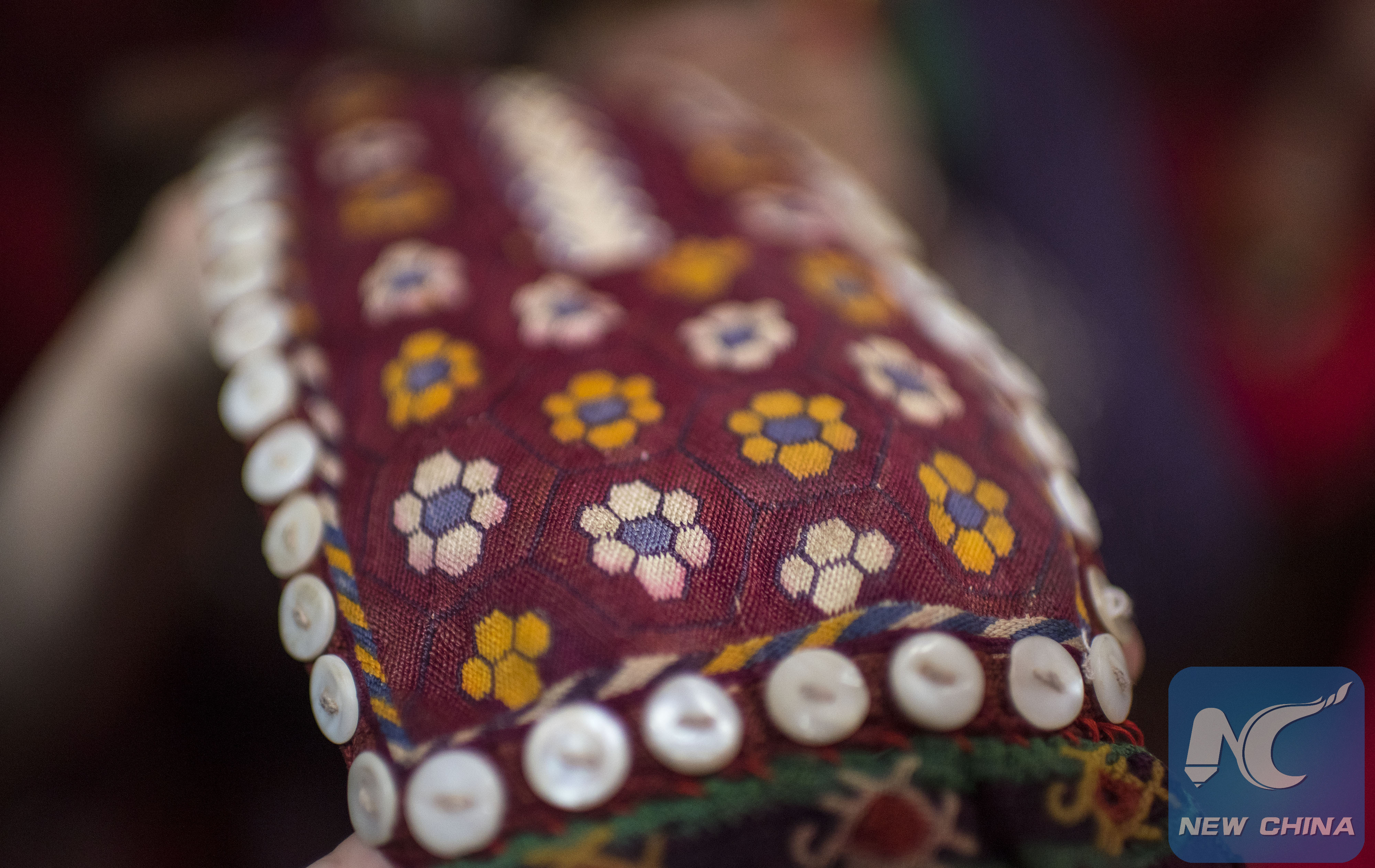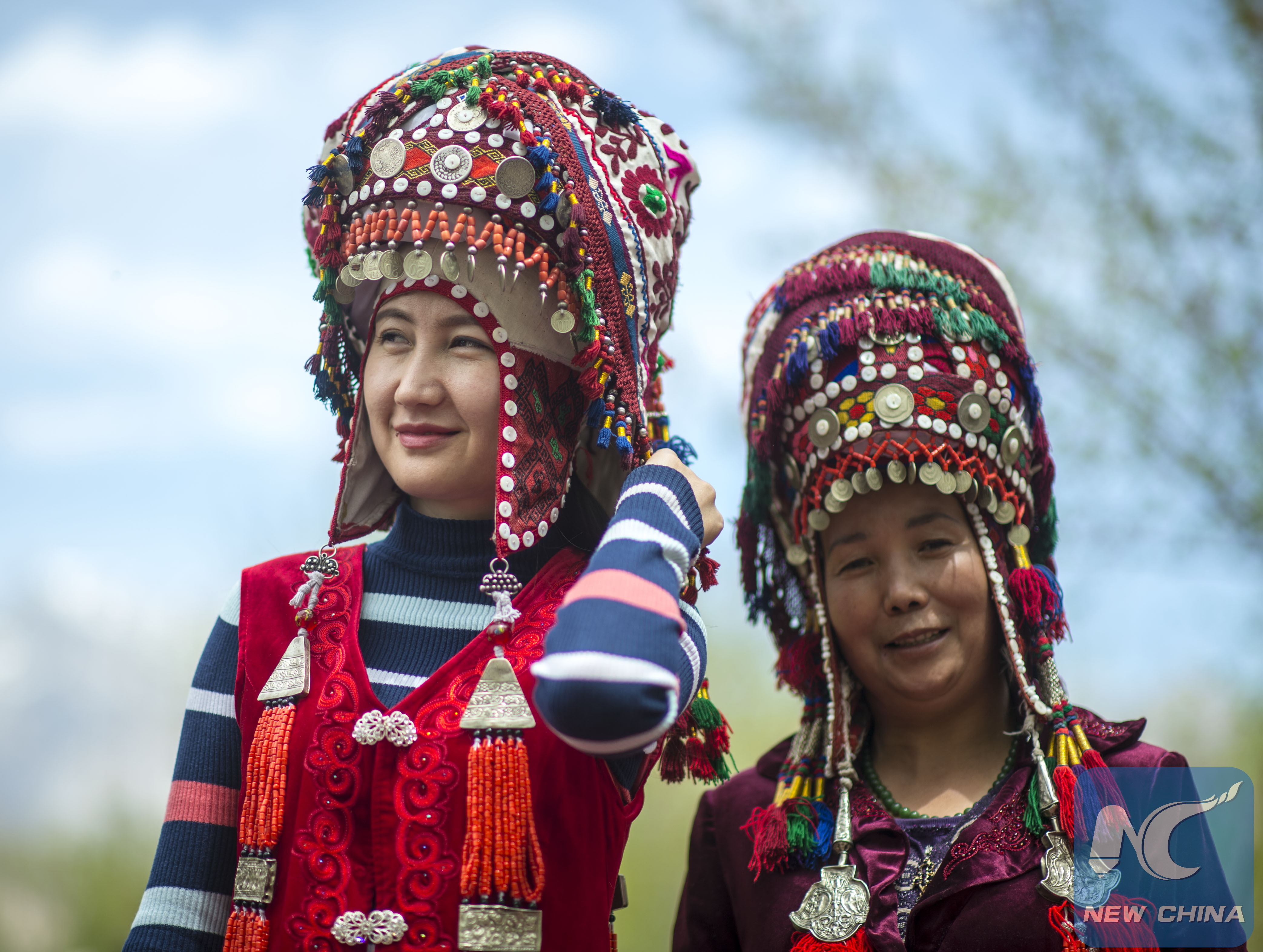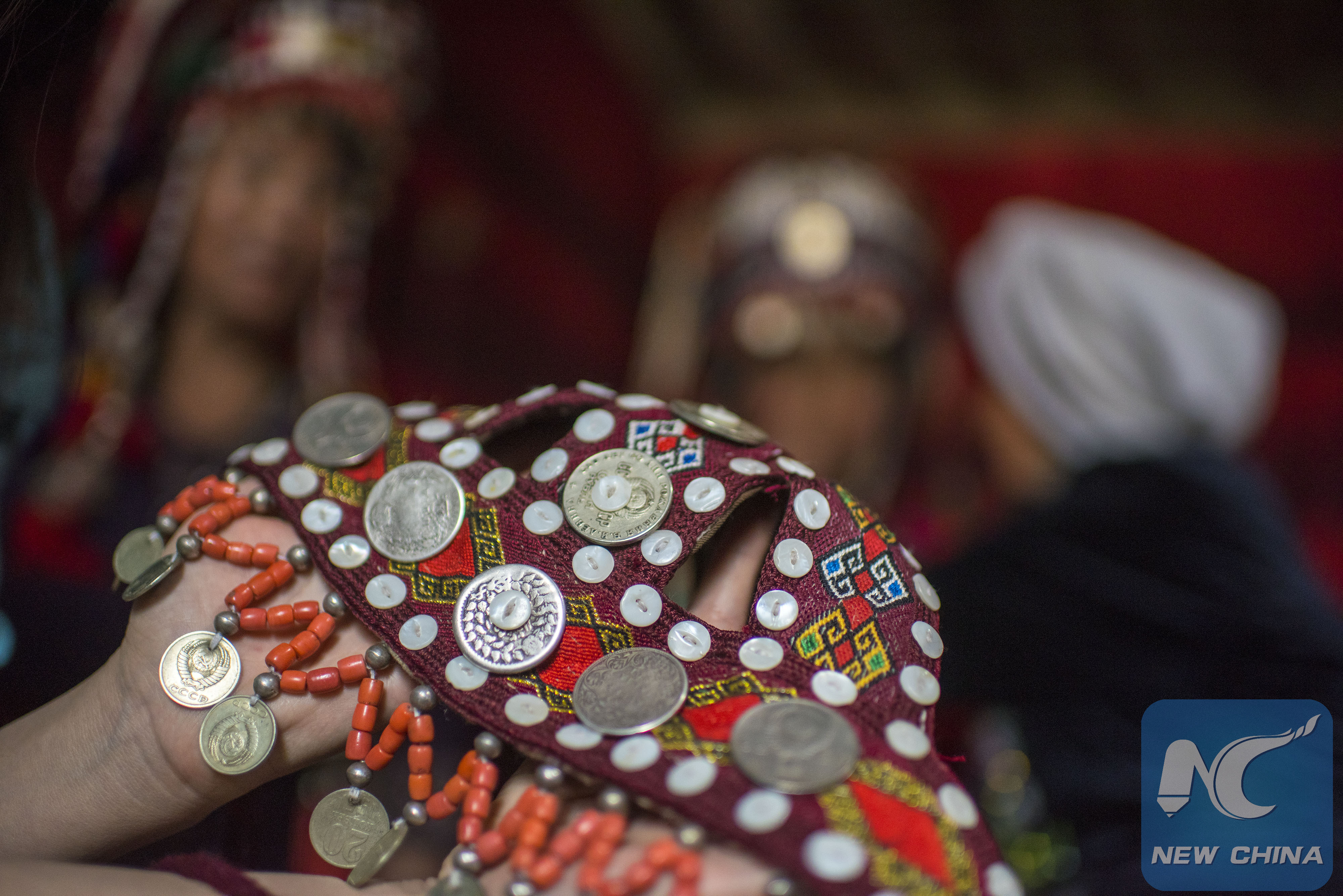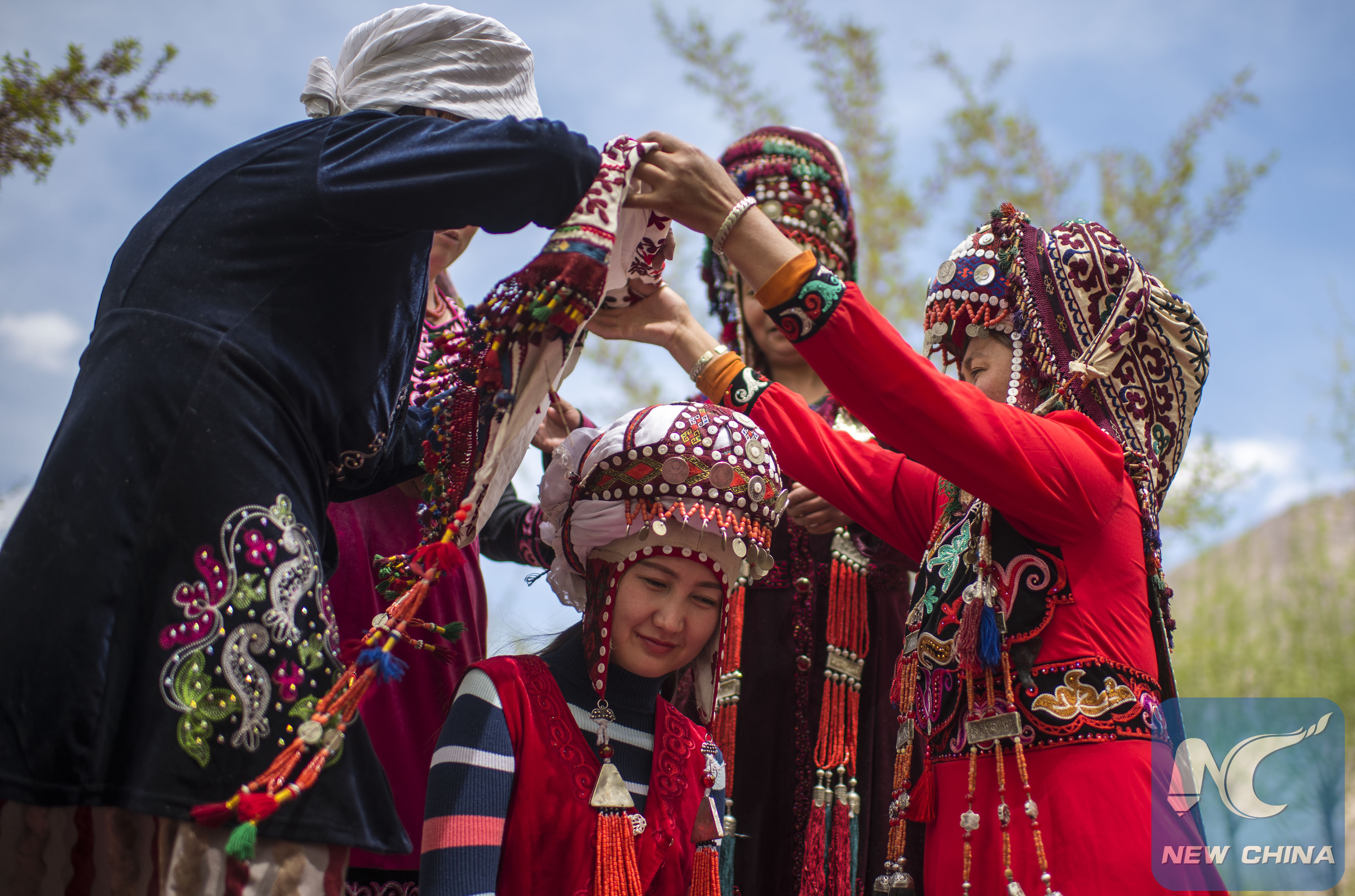
A Kyrgyz woman tries on the Kalak headdress.
Haznihan Turdi is proud that she makes the best Kalak, a traditional headwear for Kyrgyz women, in her village. The wedding headwears of most girls in Gaizi village of Aketao County, Xinjiang Uygur Autonomous Region in northwest China are made by the 65-year-old woman.
Haznihan's hands are swift and nimble, but it took her 10 years to make a headwear for each of her five daughters.
Perhaps, however, the proudest thing for her is that her youngest daughter Gulisari has learned the craft from her. Before that, the woman worried that the heirloom of her family might someday get lost in the world.

Like other old traditions, the Kalak is in the danger of being lost.
Like other old traditions, the Kalak is in the danger of vanishing as few young women can rival the old in needlework, let alone the most intricate skill in making the Kalak. Kalak making involves sophisticated stitching, tassel weaving and horse mane coiling. Every step requires patience. Haznihan spent three years imparting the craft to her daughter.
Besides, ancient coins, the most important ornament in Kalak, are hard to find in recent years.

The Kalak usually weighs tens of kilograms.
Actually, every household in Gaizi, like Haznihan, boasts an old Kalak that might have been passed on and carefully preserved for generations. The oldest Kalak in the village is said to be three or four hundred years old.
The Kalak is deeply rooted in the Kyrgyz culture. According to the Epic of Manas, a centuries-old epic extolling a tribal leader named Manas, Kanykei, wife of Manas, wears a Kalak headdress everyday in her life. As time fleets, Manas and Kanykei are nowhere to find, but the Kalak remains intact in the unobtrusive village of Gaizi.

Ancient coins, the most important ornament in Kalak, are hard to find in recent years.
The making of the Kalak consumes not only time but also sumptuous raw materials. To complete a Kalak headwear, one needs a length of 45-meter white cloth as the interior adornment. On the exterior, a lot of precious decorations will be used, like silver and gold, ancient coins, corals, agate and precious stones among others. All the things together weigh tens of kilograms.
In that case, the Kalak headwear is rare and precious, and is usually passed on for generations. Women in Gaizi prepare the headwear a few years before wedding as their dowry.

A Kyrgyz woman tries on the Kalak with the help of others.
Thanks to cultural protection efforts from the government, Haznihan's worry wanes lately as the Kalak headwears are regaining eminence in her hometown on the Pamir Plateau. Once a reserved gift at weddings, the sumptuous headdress is also making increasing appearance during festivals. In Aketao County, an institution has been founded to promote the ancient costume to a wider market.
Haznihan and several other Kalak makers have started a business in the village. They work hand in hand to make tailored Kalak headwears for tourists. Each one is worth 3,000 yuan ( roughly 440 U.S. dollars) to 10,000 yuan as to how exquisite it is.
The woman is glad that her precious heirloom has found a way to keep fresh and alive.
(All photos by Jiang Wenyao)

